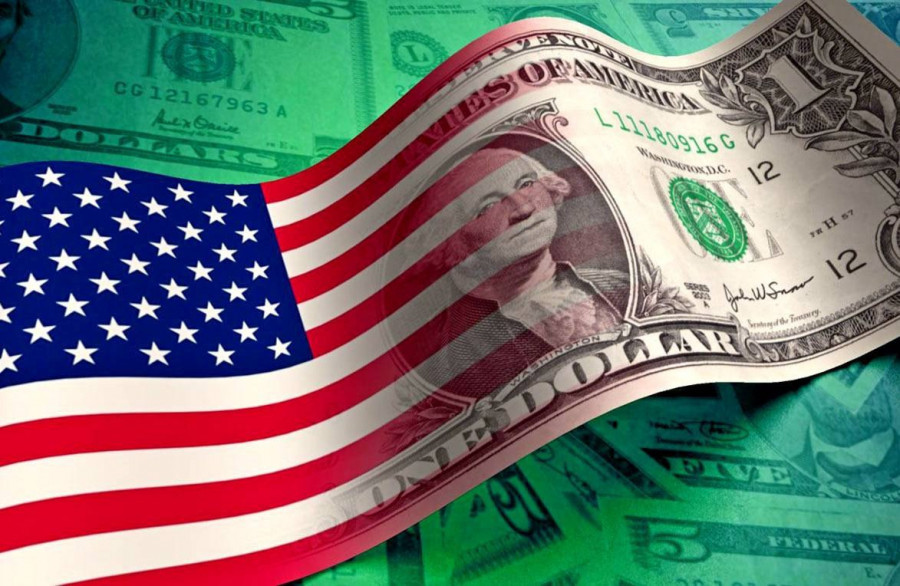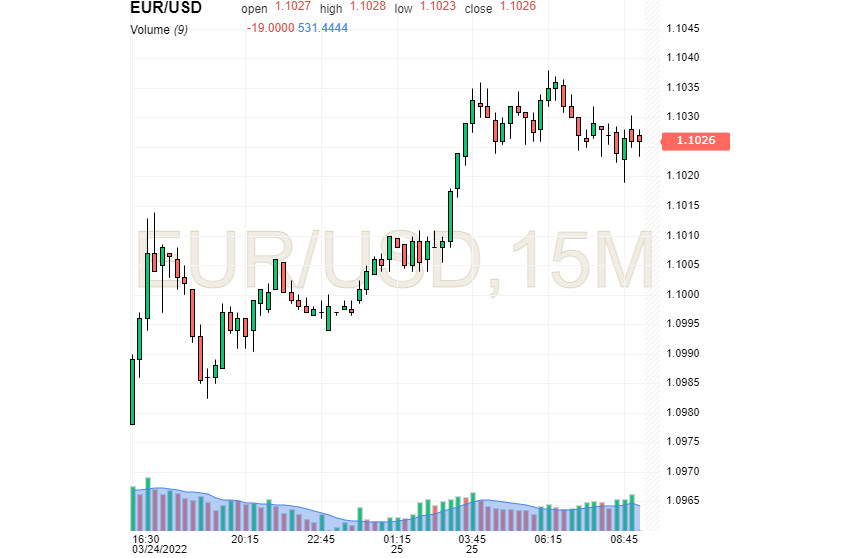

The US currency is once again navigating between negative US macroeconomic data and geopolitical tensions. This time, USD struggles to benefit from the current situation. Due to a number of unfavorable factors, maintaining its dominant position is an increasingly difficult task for the US dollar.
USD went up against EUR late on Thursday, March 24, after the US Department of Labor released the latest jobless claims data. The number of Americans filing new claims for jobless benefits has fallen to the lowest point in 53 years - 187,000. Initial claims have been approaching pre-pandemic levels over the past 4 weeks - before COVID-19, the number was hovering near 220,000.
This situation has given some momentum to the US currency, helping it overcome today's fall. USD slumped early on Friday against its peers in the run-up to today's data releases. The University of Michigan Consumer Sentiment data is due today - it is expected to decrease to 59.7 points compared to 62.8 points in February. The index is used to assess consumer attitudes to the state of the US economy.
Although the US currency is heavily influenced by macroeconomic statistics and the geopolitical situation, it is far from powerless. Expectations of further monetary tightening by the Fed give support to the US dollar. Most analysts see the regulator hike the rate to 0.75%-1% in May. Earlier, Fed chairman Jerome Powell pointed out that the US central bank would adopt a more hawkish policy and increase the key rate by more than 25 basis points if necessary.
Strong US labor market data has become a positive driver for USD, giving the Federal Reserve room for maneuver. The Fed can tighten its policy without the risk of triggering a recession. Current macroeconomic data also encourage these policy changes. The expanding labor market is accelerating the inflationary spiral, maintaining current energy prices, as well as prices of certain goods.
At this point, the euro is overshadowed by geopolitics. Although investors are not ignoring it, they prefer risky assets. EUR is under pressure of rising geopolitical tensions. If the ECB sticks to its dovish tone, EUR/USD could decline further, analysts say.
The pair will advance if the geopolitical situation improves. Currently, markets are cautiously optimistic. EUR/USD was trading at 1.1026 early on Friday, trying to get above this level. However, the downtrend could resume in the upcoming weeks due to uncertainty over monetary policy.

Unlike the Federal Reserve, the European Central Bank maintains its dovish position. The regulator could still reconsider its stance and follow its US counterpart at its next meeting, which is scheduled for April 14.